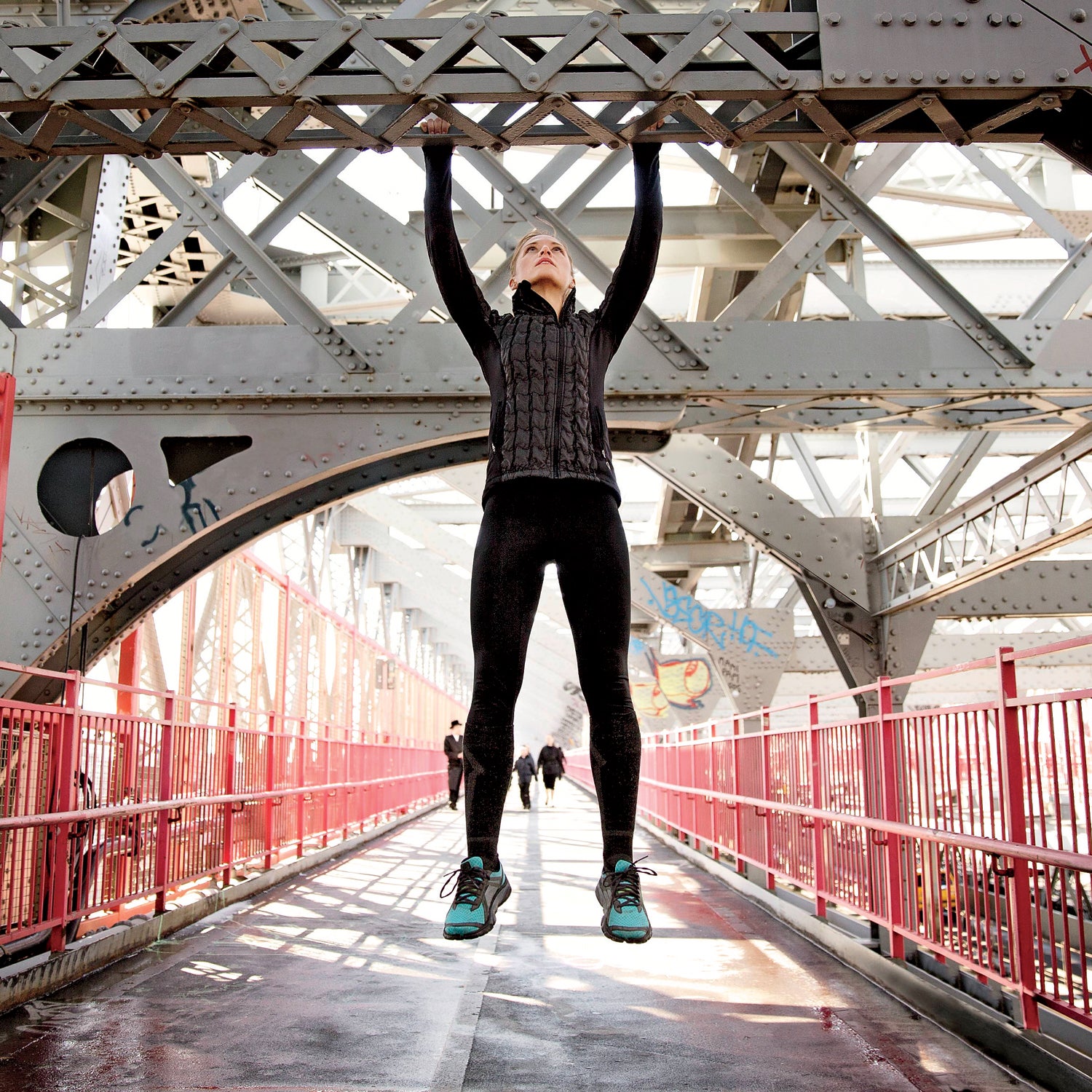With cycling meetups, paddling races, and farm-fresh delivery services sprouting up all over the country, it's easier than ever to make the urban jungle your playground. We've got 16 strategies for outdoor workouts, microadventures, bike commuting, and where to stash all that gear.
1. Rise and Shine
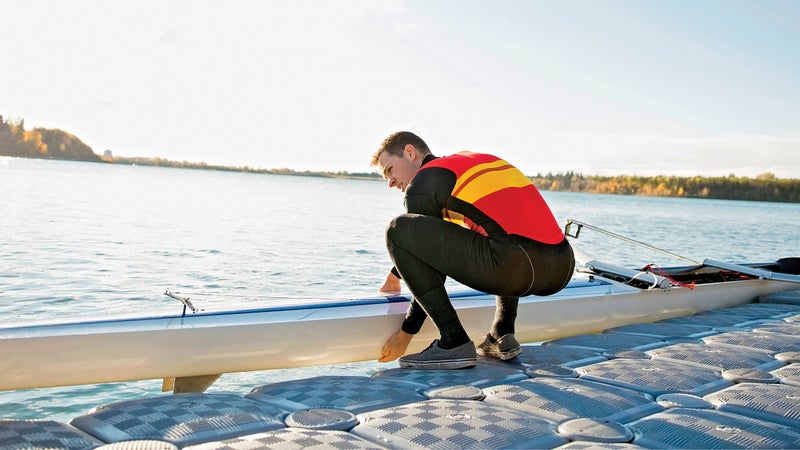
You can accomplish a lot before 7 a.m. Just ask Sam McCarthy, growth manager at Gociety, a social-networking startup in Denver that’s focused on the outdoors. “The first time I did dawn patrol it was daunting, but I’ve learned that whether I’m going on an early-morning trail run or out skiing, the key is planning. I don’t schedule anything for the night before, and I get all my stuff ready to go, including my work clothes. I’m not a morning person, but when you see the sun rise over a beautiful place, you can’t wait to do it again.”��
2. Eat Out More Often

Too often the restaurants on a city’s best-of list pump out food loaded with salt and butter. That’s changing, thanks to a new breed of flavor-focused healthy restaurants popping up in cities across the country. In New York, Chinatown’s serves the fashion crowd grain bowls for breakfast and inventive healthy fare like quinoa with fennel and asparagus for dinner; and in the East Village, chef Marco Canora hands out cups of comforting broth through a window at . In Miami, vegetarian specialist Matthew Kenney will begin preparing his trademark raw dishes at later this year. , a health-conscious fast-food chain from Palo Alto, California, is bringing grass-fed beef to places you’d expect (Los Angeles) and some you wouldn’t (Dallas).��
3. Make Waves
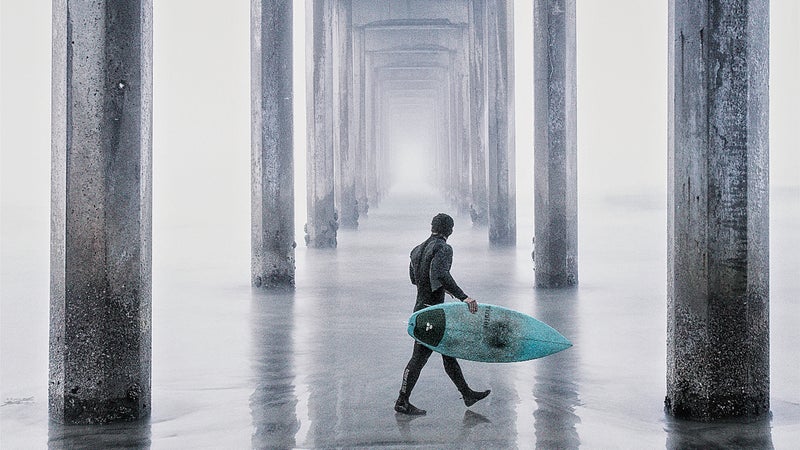
If you’re walking past a river or an ocean or a lake every day and ignoring it, stop doing that—waterways make up some of the best playgrounds in urban areas. Cincinnati’s features kayak and SUP races and a float with thousands of boaters. Columbus, Georgia, opened a Class IV right downtown. There’s even a canoeing club for Brooklyn’s —a superfund site that the Gowanus Dredgers assure us is safe to paddle in.��
4. Say Goodbye to Gas Stations
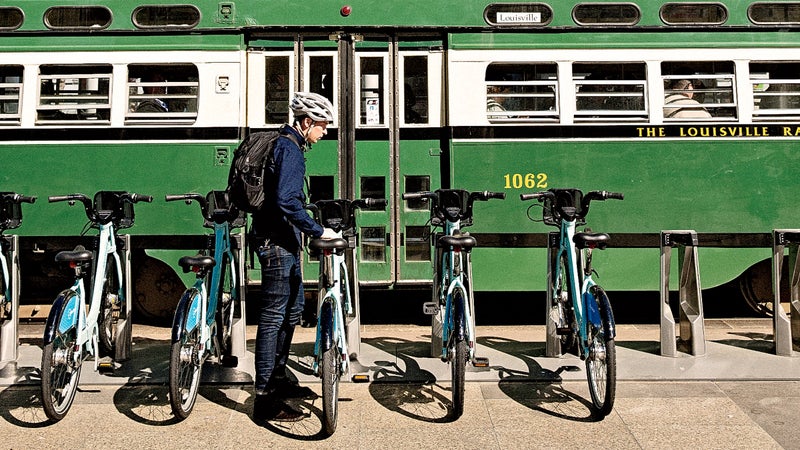
Bike commuting grew 62 percent in the U.S. between 2000 and 2013, but today fewer than one��percent of Americans ride to work, even though it’s clinically proven to make you happier and healthier. What’s holding folks back? “The hardest part is starting,” says Bryan Papé, founder of , a Seattle commuter-bike company. “Once they do, people realize that it’s a lot easier than they thought.” Papé offers these tips on how to roll with confidence—and be prepared for anything.
- Don’t obsess over your bike. “An eight-speed can get you around any city. You can get a new bike for $1,000 or a used one for much less.”��
- Plan your route. “I use the bike tab on Google Maps, which shows recommended roads with bike lanes. Try different ones so you have several to choose from.”��
- Get comfortable riding on streets. “Always assume cars don’t see you. But remember that it is perfectly legal to be on the road.”��
- Be self-sufficient. “Have a repair kit, and know how to use it. Carry two tubes—it’s nice to have an extra if someone else flats—and practice changing tires beforehand so you’re not fumbling around.”��
- Bring sustenance. “Having a boost of energy when you need it is invaluable.”
5. Be an Office Activist
Bike commuting is much more pleasant if your workplace is supportive. Let your boss know things need to change by copying this letter, filling in the blanks, and sliding it under his or her door. Maybe include a six-pack of beer, too.
Dear BOSS'S NAME,
I would like to make a friendly suggestion that COMPANY NAME��consider implementing a few easy changes to encourage employees to ride their bicycles to work. Would you consider setting up a bike-storage area? You could also reimburse commuters for bike-commute-related expenses; the Bicycle Commuter Act of 2008 lets you write off up to $240 per rider. COMPANY NAME��could sponsor memberships to LOCAL BIKE SHARE PROGRAM! Also: how about a Ping-Pong table?
Sincerely,
YOUR NAME
6. Find Your Tribe
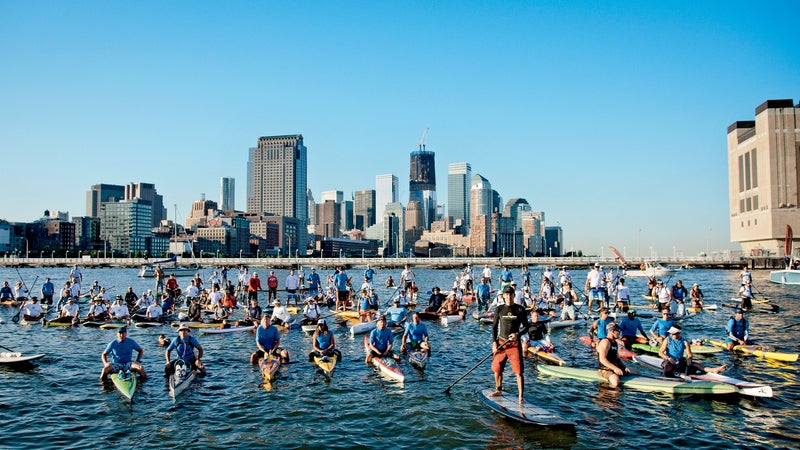
You’re not the only person in your city who wants to hike or head to the crag. Join one of the 8,631 outdoor-related groups across the country that gather for adventure outings through Meetup, or use the free social network , where members post plans for mountain-bike rides, trail runs, and weekend ski trips that any member can join. The social app helps you meet people with the same interests and arrange group activities. If you just need a training partner for the afternoon, try . It’s like Tinder for workouts, connecting people looking for a running, cycling, climbing, or skiing buddy.
7. Work Out for Free
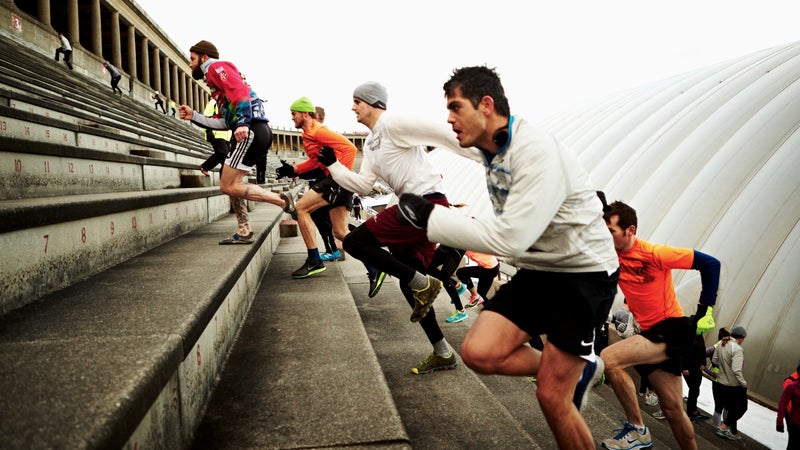
Deals are everywhere if you know where to look. Check in with your local parks and rec department. New York’s program sponsors free kickboxing and circuit-training classes, among others, and St. Paul, Minnesota, offers a summer-long in nine city parks. Or look up local nonprofits like Miami’s , which runs donation-based yoga classes. offers free outdoor workouts—hill repeats, stadium sprints—in 19 cities, and this March, it partnered with the North Face to debut sport-specific training classes for climbers, mountaineers, and ultrarunners across the country.��
8. Press Play
Instead of bemoaning your commute, use the downtime to get inspired for your next adventure with these podcasts.
- :��Host Chris Kalous talks the climbing life with guests like Lynn Hill and Alex Honnold.��
- :��Jeff McIntyre looks at kayaking from all angles.
- :��Good-natured surf banter, from the pro circuit to wherever the waves are huge.��
- :��Interviews with anglers about landing trophies around the world.��
- :��The wide world of going really far, with race reports and guests like Dakota Jones.
- :��For the fixie nut turned roadie, hosts Mike Spriggs, Klaus, and SkullKrusher cover the culture of road riding with tongue planted firmly in cheek.��
- :��A rundown of mountain-bike news, with a focus on reports from enduro racing.
9. Don't Sweat the Small Space
Maxwell Ryan, founder of popular home-design site , is an avid surfer, skier, and cyclist. Yet he manages to peacefully coexist with all that gear in a small New York City apartment. Here’s how he does it.
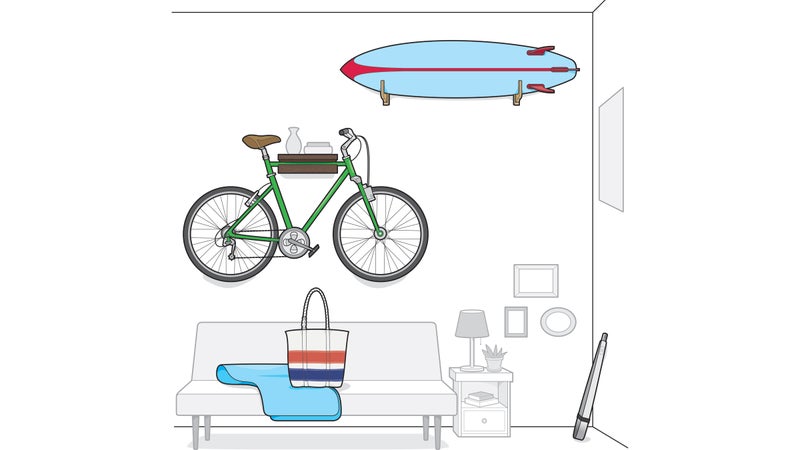
Bike:��Use a ledge that stores your bike snug against the wall, like ($299). It’ll display your pride and joy and do double duty as a bookshelf or a platform for a plant.
Surfboard:��If it won’t fit in a closet, use it as decor by hanging it on a rack like the sleek ($75).��
The Little Things:��Stay organized: Ryan stores his gear by activity in (from $110). And smaller accessories, like the slim ($40) and svelte titanium (from $125), are easier to store.
10. Hang Back
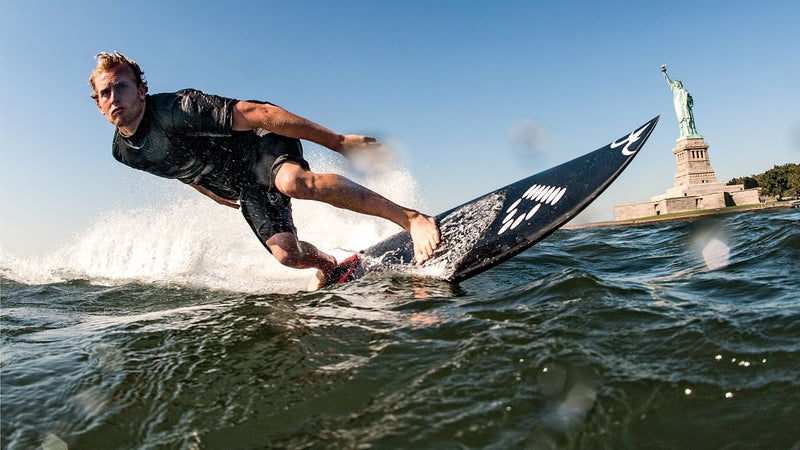
On sweltering summer weekends, most cities empty out, with people fleeing for country homes and campsites. The smarter move? Don’t follow the crowd. Instead, do the unthinkable: go for a long run—then cool off in an open fire hydrant. (Pro tip: in New York, if you swing by a fire station, the firefighters will give you a nozzle to turn it into a fountain.) Order a soda-can disguise on eBay and take an IPA on a long walk. Go see the latest superhero blockbuster for some air conditioning. Score reservations at restaurants that are impossible the rest of the year. Do whatever it takes to get into a swimming pool. Enjoy the extra space, the empty trains, and the hours saved by not sitting in a car on your way out of town.
11. Shop Around
The (from $79) gets you into three fitness classes per month at each of the participating gyms and studios in your city. It’s available in 29 of them across the country, each with between 35 and 400 participating locations, so you’ll never run out of stuff to try. If indoor stuff like spinning or barre aren’t your thing, go for one of the outdoor options, like paddleboard yoga in San Francisco or a marathon-running clinic in Miami.
12. Hit the Park
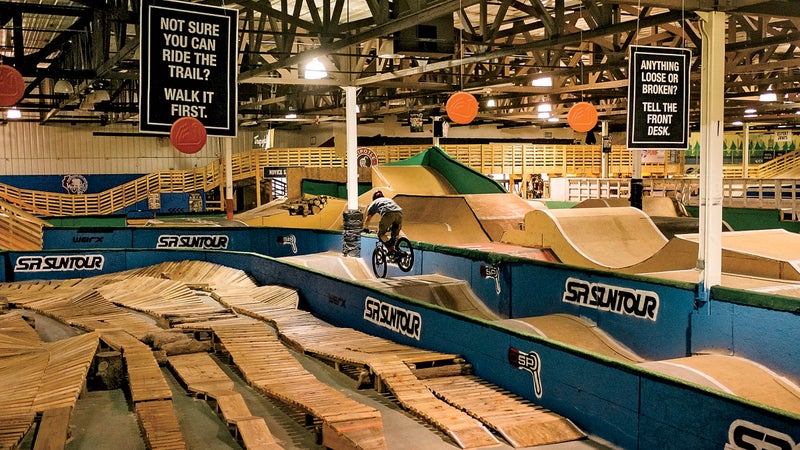
Thanks to a wave of new indoor bike parks, cities offer some of the funnest places to ride knobby tires. The first, in Cleveland, opened in 2004. Now spots like the in Pittsburgh and in Syracuse, New York, are popping up everywhere. “Interest tripled in the past couple of years,” says Mark Eller of the International Mountain Bicycling Association. The brand-new , a seven-acre park ten stories beneath Louisville, Kentucky, is by far the largest. It houses massive dirt features and winding singletrack.
13. Know Your Dojo
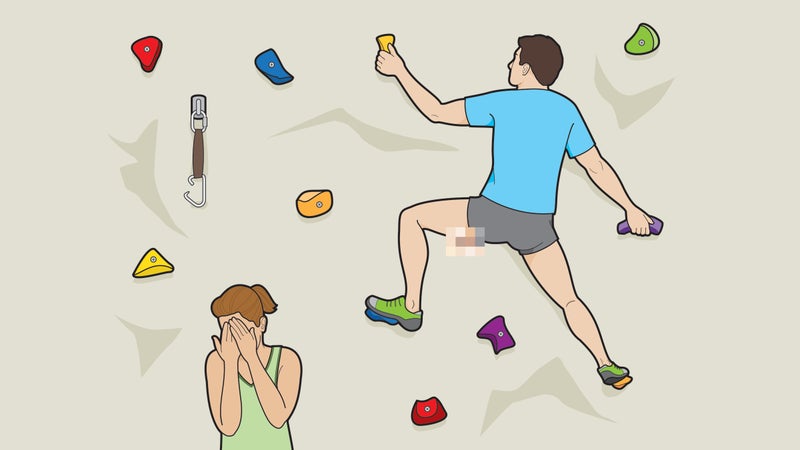
The hottest workout joint in just about any urban area is the climbing gym: L.A. now boasts possibly the world’s coolest, , and the team behind the much heralded has rolled out four gyms (in Brooklyn, Queens, Chicago, and Boston) since 2009. But you can’t just walk in and expect to climb like a pro. Avoid withering looks from regulars with these tips from Jackie Hueftle, head route setter for .
DO: Listen to the orientation talk. It’ll cover general safety and etiquette but also specific things about the gym, like a wall you can’t grab the top of or a corner you’ll want to be careful around.��
DO: Clean the holds of the line you’re working on with a boar’s-hair brush or an old toothbrush. It makes them easier to grip, and it’s just polite.��
DO: Wipe your shoes on your pants before you get on the wall. It’ll prevent the holds from getting caked with dust.��
�ٰ���’T: Wear short-shorts. Do we really need to say why?��
�ٰ���’T: Use other people’s chalk without asking or make a big mess with your own.
�ٰ���’T: Scream and kick your chalk bag into the wall just because you can’t climb V4.��
14. Pull a Fast One
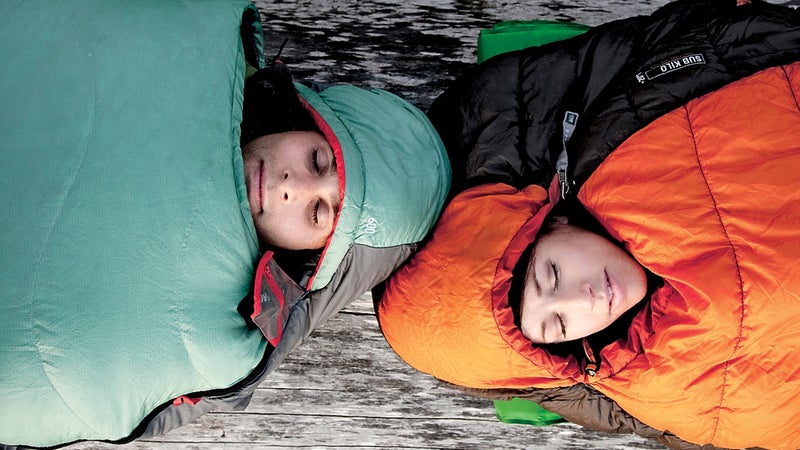
If you think great experiences happen only on long vacations, Alastair Humphreys begs you to reconsider. In ($22, William Collins), he advocates finding simple adventures��close to home. Start with one of these quick ideas from his book.
If You Have One Day…
“Bike to the nearest train station and choose a destination that’s about 30 miles away. Buy a one-way ticket. When you arrive, hop on your bike and ride home. Navigate using a compass or the Crowsflight app. The twists and turns and decisions that crop up along the way are down to your instinct and serendipity. You will see things you have never seen before.”
If You Have One Night…
“Pack a rucksack with a sleeping bag and bivvy, and jump on the train at 5 p.m., bound for the nearest area of hilly countryside. There are two answers regarding where you can sleep in the wild: the technically legal one is ‘almost nowhere (without permission)’ and the practical one is ‘almost anywhere,’ as long as you’re not blatantly on private land, near someone’s home without asking, or otherwise being annoying.”
15. Go All-Terrain
Hate to work out indoors? Use the city landscape as your gym. Start by running, naturally, and doing your best Rocky impression up big staircases. But don’t stop there: Jennifer Pattee, a San Francisco ultrarunner and the founder of Basic Training, leads outdoor movement classes on urban features. She recommends these moves instead of sweating it out under the fluorescents.��
Bench leaps in sets of ten
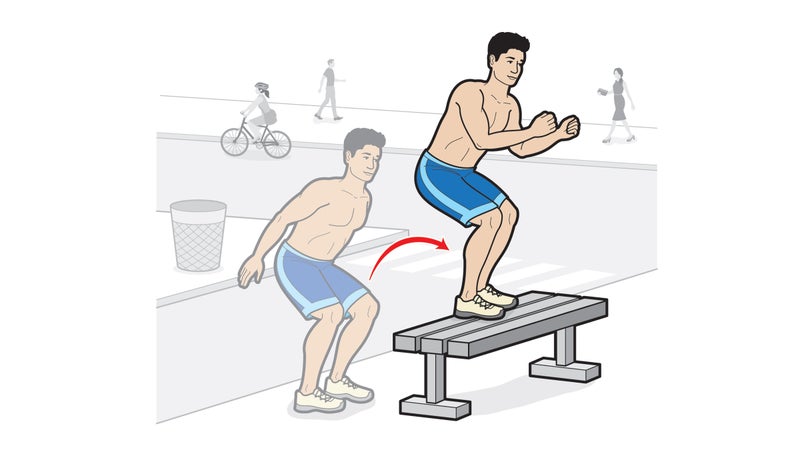
Handrail L-sits, held for 15 to 30 seconds
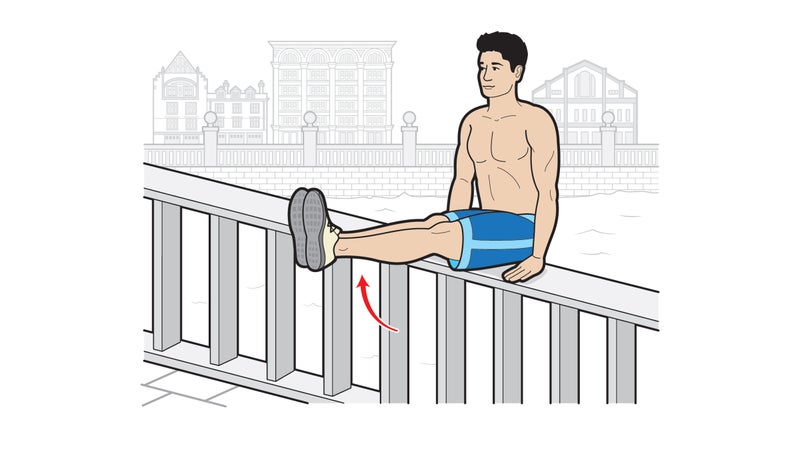
Single-leg hops over sidewalk lines
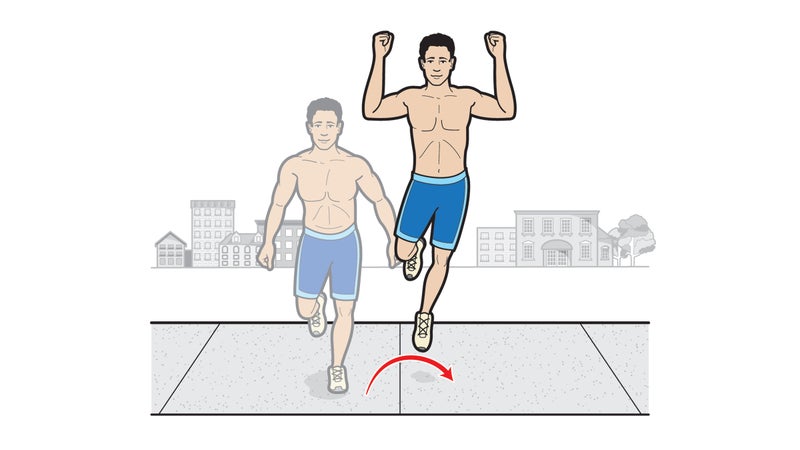
Pull-ups on scaffolding
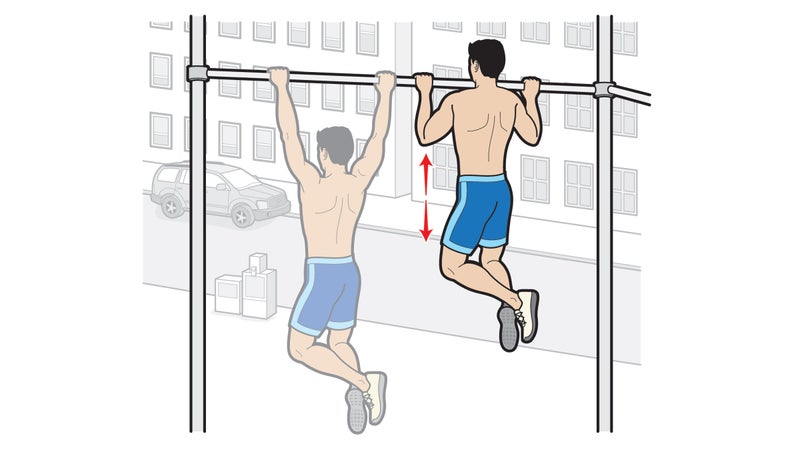
16. Get the Right Gear
Try our six suggestions for the ultimate under-bed gear shed.


